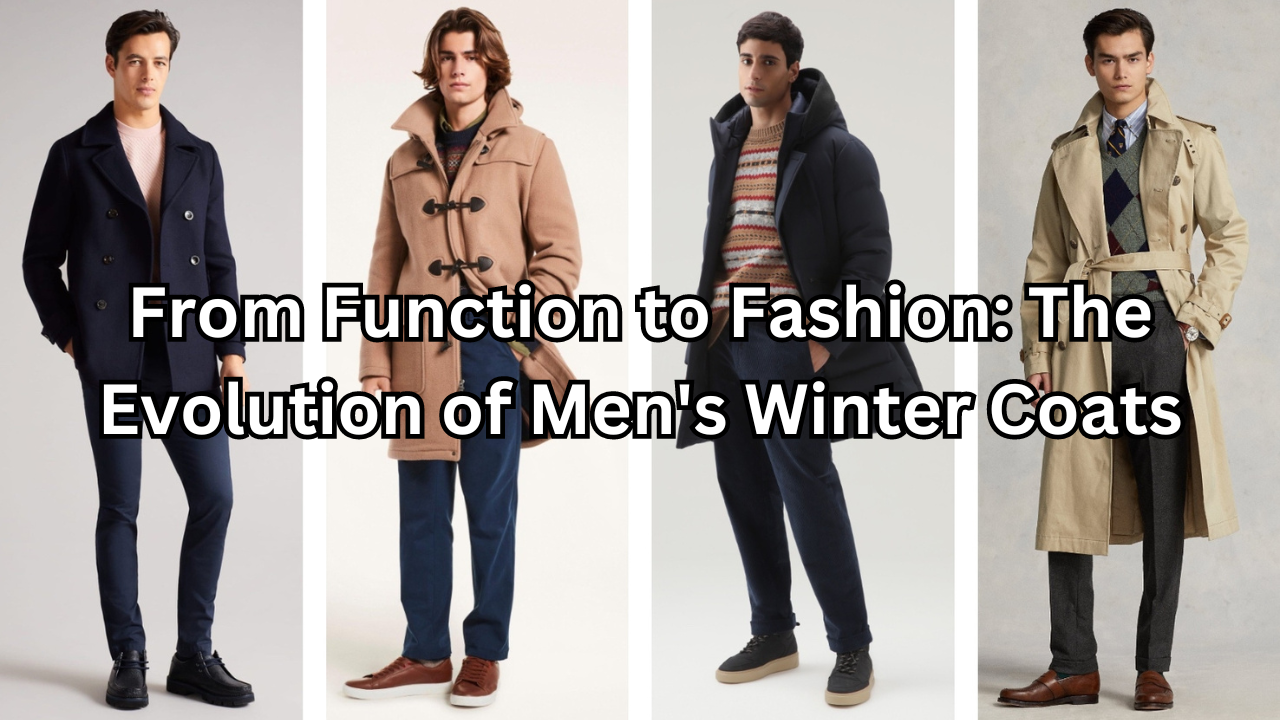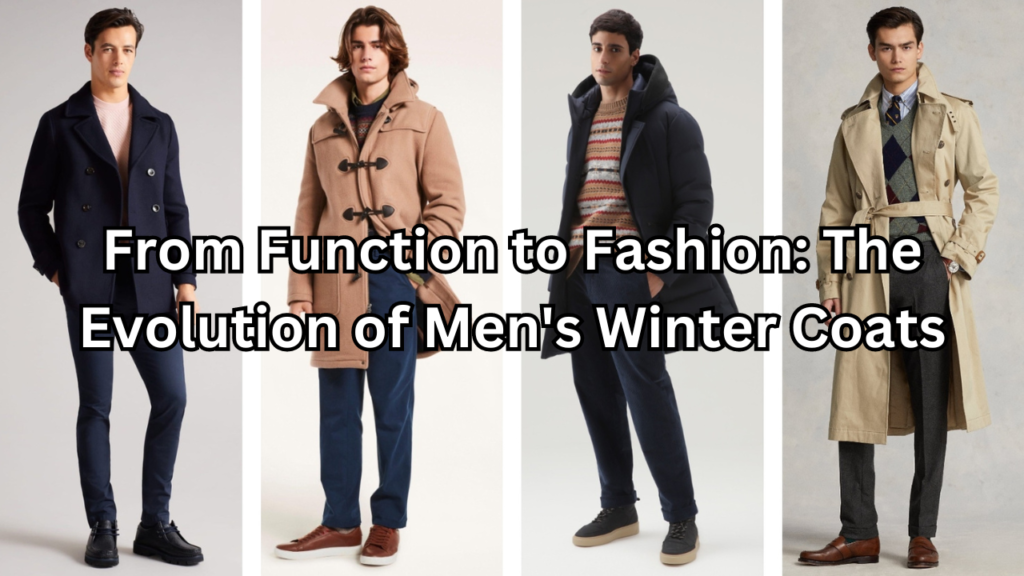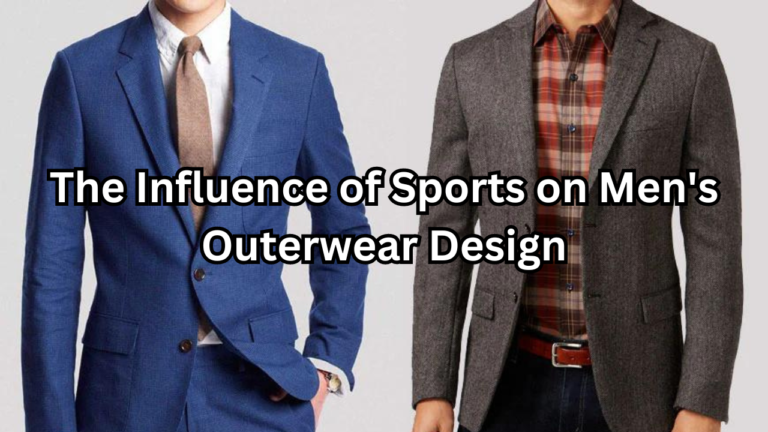

Table of Contents
Introduction
Winter coats have long served as more than just protection against the cold. For men, they have been emblematic of style, status, and practicality throughout history. From the earliest iterations crafted for sheer survival to the contemporary designs that grace runways and city streets alike, men’s winter coats have undergone a remarkable evolution. This evolution mirrors not only changes in fashion but also shifts in technology, societal norms, and cultural influences.
We embark on a journey through time, tracing the trajectory of men’s winter coats from their functional origins to their status as fashion essentials. We’ll explore how innovations in materials and design have transformed these garments from mere outerwear into symbols of individuality and expression. From the tailored elegance of centuries past to the cutting-edge styles of today, the evolution of men’s winter coats tells a captivating story of adaptation, creativity, and the enduring pursuit of both form and function. So, bundle up as we delve into the fascinating world of men’s winter coat fashion.
Brief overview of the evolution of men’s winter coats
Throughout history, men’s winter coats have evolved significantly in both style and function. From primitive garments designed solely for warmth to sophisticated outerwear pieces that seamlessly blend fashion and utility, the evolution of men’s winter coats is a testament to human ingenuity and changing societal needs. Over the centuries, advancements in materials, tailoring techniques, and design aesthetics have reshaped the landscape of winter coat fashion, reflecting the values, preferences, and technological capabilities of each era.
Importance of winter coats beyond functionality
While the primary purpose of winter coats is to protect from the elements, their significance extends far beyond mere functionality. Winter coats serve as powerful symbols of identity, status, and personal style. They convey a wealth of information about the wearer’s taste, lifestyle, and cultural affiliations, making them essential components of any wardrobe. Moreover, winter coats often serve as a form of self-expression, allowing individuals to showcase their unique personalities and aesthetic sensibilities to the world.
Thesis statement: Exploring the transition of men’s winter coats from purely functional to fashionable garments
The transition of men’s winter coats from purely functional garments to fashionable staples represents a fascinating intersection of tradition, innovation, and cultural evolution. This thesis aims to explore the multifaceted factors that have contributed to this transition, including advancements in materials and technology, shifts in societal attitudes towards fashion, and the influence of external forces such as art, music, and popular culture. By examining the interplay between form and function in the design of men’s winter coats, we can gain deeper insights into the broader dynamics shaping contemporary fashion and identity.
Historical Context
Early forms of men’s winter coats (e.g., animal skins, cloaks)
The origins of men’s winter coats can be traced back to ancient civilizations where early humans crafted rudimentary garments from animal skins and furs to protect themselves from the harsh elements. These early coats, often in the form of cloaks or capes, served a purely functional purpose, providing warmth and shelter from wind and rain. Among nomadic tribes and early hunter-gatherer societies, the use of animal hides for clothing was not only practical but also deeply ingrained in cultural and ceremonial practices, reflecting a profound connection between humans and the natural world.
Functionality-driven designs in medieval and Renaissance periods
In the medieval and Renaissance periods, men’s winter coats underwent significant transformations driven by both practical necessity and evolving social norms. During this time, the concept of tailoring began to emerge, leading to the development of more fitted and structured garments. Men wore long, heavy coats made from wool or other coarse fabrics, often lined with fur for added insulation. These coats were designed to withstand the rigors of outdoor life, reflecting the utilitarian values of the era. Additionally, coats became status symbols, with the wealthy and aristocratic showcasing their wealth and social standing through elaborate and luxurious outerwear.
Industrial revolution and the emergence of tailored coats
The industrial revolution brought about profound changes in the way men’s winter coats were produced and worn. Advances in textile manufacturing, such as the invention of the spinning jenny and power loom, made fabrics more affordable and accessible to the masses. This democratization of fashion led to the widespread adoption of tailored coats as everyday attire, rather than just a luxury reserved for the elite. Tailoring techniques became more refined, allowing for greater precision in fit and construction. As a result, men’s winter coats became more versatile and stylish, adapting to the shifting demands of urban life in the burgeoning industrial cities of the 19th century.
Functional Evolution
Technological advancements influencing coat design
The evolution of men’s winter coats has been profoundly shaped by technological advancements, which have revolutionized both the materials used and the construction techniques employed in their design. From the development of waterproof and wind-resistant fabrics to the invention of insulating materials such as down and synthetic fibers, technological innovation has greatly enhanced the functionality and performance of winter coats. Additionally, advancements in manufacturing processes, such as the introduction of seam sealing and heat-bonding techniques, have allowed for the creation of more durable and weatherproof outerwear.
Military influences on coat styles and features
Military uniforms have long served as a source of inspiration for men’s winter coat design, influencing everything from silhouette to functionality. Throughout history, military coats have been designed with practical considerations in mind, incorporating features such as epaulets, double-breasted closures, and large pockets for carrying essential gear. These utilitarian elements have often been adapted for civilian wear, providing both style and functionality to men’s winter coats. Moreover, military coats have also influenced fashion trends, with iconic styles such as the trench coat and pea coat becoming enduring symbols of masculine elegance and sophistication.
Exploration of utilitarian designs in outdoor wear
The rise of outdoor recreation and exploration in the 20th century sparked a new wave of innovation in men’s winter coat design, leading to the development of utilitarian garments specifically tailored for outdoor activities. Brands such as The North Face, Patagonia, and Columbia pioneered the use of technical fabrics and innovative features designed to enhance performance and comfort in extreme conditions. From breathable waterproof membranes to adjustable hood systems and articulated sleeves, these utilitarian designs revolutionized the way men approached outdoor pursuits, blurring the lines between fashion and function. Today, outdoor-inspired designs continue to influence mainstream fashion, with performance-oriented features making their way into everyday winter coat styles.
Fashion Revolution
Influence of cultural and societal changes on coat aesthetics
The aesthetics of men’s winter coats have been profoundly influenced by cultural and societal changes throughout history. From the flamboyant styles of the Renaissance to the sleek minimalism of the modern era, shifts in taste, values, and social norms have shaped the way men dress for the cold. For example, the rebellious spirit of the 1960s counterculture gave rise to the popularity of rugged, anti-establishment styles such as the leather motorcycle jacket, while the opulence of the 1980s was reflected in the popularity of oversized, fur-trimmed coats. Today, the growing emphasis on sustainability and ethical fashion has led to a resurgence of interest in timeless, classic designs made from high-quality materials.
Rise of luxury brands and designer coats
The rise of luxury brands and designer labels has played a significant role in shaping the landscape of men’s winter coat fashion. With their focus on craftsmanship, attention to detail, and exclusivity, luxury coats have become coveted status symbols for discerning consumers. Designers such as Burberry, Gucci, and Moncler have redefined the boundaries of winter coat design, blending traditional craftsmanship with avant-garde aesthetics to create iconic pieces that command attention on and off the runway. These designer coats often feature luxurious materials, intricate embellishments, and innovative silhouettes, setting them apart as symbols of wealth, taste, and sophistication.
Integration of fashion trends into winter coat designs
Winter coat designs have become increasingly influenced by broader fashion trends, with designers drawing inspiration from a diverse range of sources to create innovative and contemporary styles. From streetwear-inspired parkas to sleek, minimalist overcoats, men’s winter coats reflect the ever-changing tastes and preferences of consumers. Moreover, the growing emphasis on versatility and functionality has led to the integration of fashion-forward features such as detachable hoods, adjustable cuffs, and multi-pocket designs into winter coat designs. As a result, men’s winter coats have evolved beyond mere outerwear to become essential fashion statements that seamlessly blend style and practicality.
Contemporary Trends
Sustainable and ethical considerations in coat production
In recent years, there has been a growing awareness of the environmental and ethical implications of fashion production, leading to a shift towards more sustainable and ethical practices in the manufacturing of men’s winter coats. Brands are increasingly prioritizing the use of eco-friendly materials, such as recycled polyester and organic cotton, and adopting transparent supply chains to ensure fair labor practices and minimize their environmental footprint. Additionally, innovative techniques such as upcycling and zero-waste design are being embraced as means to reduce waste and promote circularity within the fashion industry. As consumers become more conscious of the impact of their purchasing decisions, the demand for sustainable and ethically produced winter coats continues to rise, driving positive change across the industry.
Fusion of functionality and fashion in modern designs
Contemporary men’s winter coat designs exemplify the fusion of functionality and fashion, with brands striving to create outerwear that not only looks stylish but also performs well in a variety of weather conditions. Technical fabrics with waterproof and windproof properties are combined with sleek, modern silhouettes to create coats that are both practical and aesthetically pleasing. Features such as insulated linings, adjustable hoods, and innovative closure systems enhance comfort and versatility, allowing wearers to transition seamlessly between urban environments and outdoor adventures. The result is a new generation of winter coats that embody the spirit of urban exploration, offering a perfect balance of form and function for the modern man.
Exploration of niche markets
As the fashion landscape becomes increasingly diverse and fragmented, brands are increasingly turning their attention to niche markets within the men’s winter coat industry. From niche outdoor enthusiasts to fashion-forward urbanites, there is a growing demand for specialized coats tailored to specific lifestyles and preferences. This has led to the emergence of niche brands and independent designers catering to niche markets such as sustainable fashion, urban cycling, and outdoor performance. By focusing on niche markets, brands can carve out a unique identity and connect with consumers on a deeper level, offering innovative designs and personalized experiences that resonate with their target audience. As a result, the men’s winter coat market continues to evolve and expand, offering a wide range of options to suit every style and need.
Future Directions
Predictions for the future of men’s winter coat designs
Looking ahead, the future of men’s winter coat designs is likely to be shaped by a combination of technological innovation, shifting consumer preferences, and environmental considerations. We can expect to see continued experimentation with sustainable materials and production methods, as brands strive to reduce their carbon footprint and minimize waste. Additionally, advances in 3D printing and digital design may revolutionize the way coats are manufactured, allowing for greater customization and efficiency in production. Furthermore, as fashion becomes increasingly interconnected with other industries such as technology and outdoor recreation, we may see a blurring of traditional boundaries between fashion, performance, and functionality in winter coat design.
Potential impacts of climate change on coat functionality and design
Climate change is expected to have a significant impact on the functionality and design of men’s winter coats in the coming years. Rising temperatures and shifting weather patterns may necessitate the development of coats that are more adaptable and versatile, capable of providing warmth in cold conditions while also being breathable and lightweight enough to wear in milder climates. Additionally, increased frequency of extreme weather events such as storms and hurricanes may lead to greater demand for coats with enhanced waterproofing and windproofing capabilities. As climate change continues to reshape our environment, designers and manufacturers will need to remain agile and responsive, innovating new solutions to meet the evolving needs of consumers.
Influence of technology on coat innovation
Technology is poised to play a central role in driving innovation in men’s winter coat design in the future. From smart textiles embedded with sensors to self-heating fabrics and integrated wearable technology, coats of the future may incorporate a wide range of high-tech features designed to enhance comfort, performance, and functionality. For example, advancements in nanotechnology may lead to the development of self-cleaning coatings that repel dirt and stains, while advances in biometrics may enable coats to monitor vital signs and adjust temperature accordingly. Furthermore, the rise of 3D printing and digital fabrication may revolutionize the way coats are designed and produced, allowing for greater customization and personalization. As technology continues to evolve at a rapid pace, the possibilities for innovation in men’s winter coat design are virtually limitless.
Conclusion
Recap of the evolution of men’s winter coats from function to fashion
The evolution of men’s winter coats from humble beginnings as purely functional garments to modern fashion statements is a testament to the dynamic nature of style and design. Throughout history, men’s winter coats have undergone remarkable transformations, driven by advancements in technology, changes in societal norms, and shifts in cultural tastes. From the primitive cloaks of ancient civilizations to the sleek, high-tech outerwear of today, the evolution of men’s winter coats reflects a constant striving for both form and function.
Importance of balancing functionality and style in coat design
As men’s winter coats have evolved into fashion staples, it has become increasingly important to strike a balance between functionality and style in coat design. While coats must provide protection from the elements and practical features for everyday wear, they also serve as expressions of personal style and identity. Designers must carefully consider both the technical aspects of coat construction and the aesthetic preferences of consumers, ensuring that each garment offers a perfect blend of form and function. By balancing functionality and style, designers can create coats that not only keep wearers warm and dry but also make them feel confident and fashionable.
Reflection on the enduring significance of winter coats in men’s fashion
Despite the ever-changing trends and fads of the fashion world, one thing remains constant: the enduring significance of winter coats in men’s fashion. From classic wool overcoats to trendy parkas and puffer jackets, winter coats play a crucial role in defining men’s style and wardrobe essentials. Beyond their practical utility, winter coats serve as symbols of sophistication, refinement, and status, imbuing wearers with a sense of confidence and authority. As fashion continues to evolve, winter coats will undoubtedly remain a timeless and indispensable element of men’s wardrobes, standing as enduring icons of style and functionality in every season.






